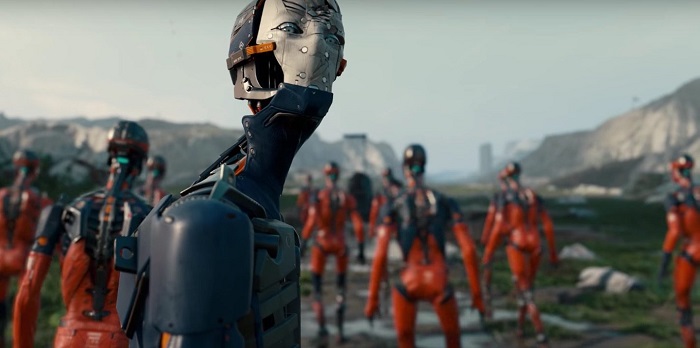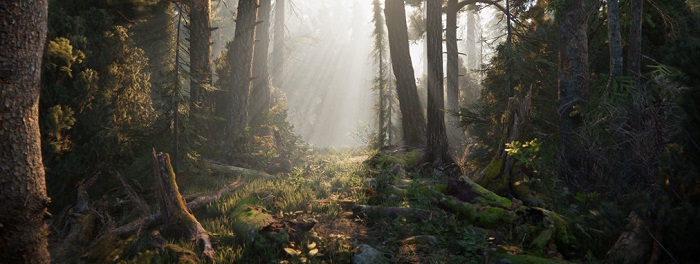Just a few weeks ago at Unite India 2019, Toonz Animation Studios gave a talk providing a comparison on how they saved time and effort during their production process when using Unity versus their traditional render pipeline. The conclusion was that they saw a 70 per cent reduction in human effort and 95 per cent reduction in machine-hours spent.
This is not a one-off realization. More and more animation/film studios, especially in India, are beginning to realize the power of Unity for they are no longer waiting for any render farm to see what their content looks like. They are making changes to things like characters, lighting, and camera positions as they work, and they are seeing the content in context – all the time. This is the future of filmmaking.
Retrospect
It was three years ago when the Unity Graphics team released Adam, an animated short film made entirely in real time. It was also around the same time when MPC (Moving Picture Company, a subsidiary of Technicolor) used Unity to create tools for pre-visualisation for Disney’s Jungle Book. These two projects really woke people up to the potential to produce animated content and film using Unity.

In the meantime, Unity was also beginning to push the limits of real-time graphics. Book of the Dead (2018) made by Unity’s Demo Team in Stockholm, showcased the capabilities of Unity for powering high-end visuals for productions. It introduced the High Definition Render Pipeline (HDRP) which gives developers total control of the renderer and makes it easier to achieve high-end visuals on Unity
Since then Unity has added more capabilities to it’s engine to help scale production so that large teams can work on a production together. In 2018, MPC developed Genesis, a set of tools that helped The Lion King crew during the production visualisation process to take a camera — or rather, something representing a camera — and physically move it around the stage. In parallel, Disney Television Animation announced Baymax Dreams, a series of three broadcast shorts which were rendered completely with Unity. They closely tracked the production and currently found 2X productivity gains compared to their traditional workflow.

The adoption of Unity as an animation/film engine has since picked up speed. For example, Bwater studios’ Treasure Trekkers used Unity purely to render the background, Sonder, an award winning short film made by a team 135 people from 7 countries used Unity to render out their entire film. Even Lexus shot an entire broadcast quality commercial for their LC500 car.
Beyond this, in India, in addition to the animated/film content produced by studios like Toonz Animation, CultureMachine and VideoGyan we are also working with a number of film/animation studios behind the scenes which we hope to publicise as well.
Learnings
Real-time filmmaking is taking the industry by storm, giving directors and studios unprecedented artistic freedom in half the time of traditional workflows. That said, we constantly listen to our users and get their feedback to keep improving the production process. We have learned that:
- For 3D Rendered episodic content real-time rendering is good or better than offline rendering techniques.
- Developers tended to work in smaller groups due to faster iteration time. This has resulted in a gain in creativity and productivity.
- Directors/Developers get more control on what they do because they instantly see what they are envisioning.
- There is a learning phase that is necessary since real-time rendering is quite different from offline rendering techniques.
- Ability to seamlessly exchange data from/to digital content creation tools such as Maya is critical. Plugins such as Unity Japan’s MeshSync and FBX Roundtripping are invaluable.
- Formats and standards such as USD, MaterialX, OpenSubDiv are converging and more work needs to be done on both Unity and on the studios’ side.
- Unity has unlocked many possibilities to explore and develop productions. Technologies such as virtual production, motion capture, live streaming, AR Walls, realtime raytracing and photogrammetry are some of the techniques that are becoming common during production.
What’s coming?
Python Scripting
The Python scripting language is a de facto standard for workflow scripting in the CG ecosystem, and provides a single point of entry to data preparation, asset management, scene and sequence construction, user interface, and offline rendering. Now users can leverage the power of their existing Python codebase with Unity.
Project management with Shotgun
Shotgun Software, an Autodesk company, provides essential business tools for managers and visual collaboration tools for artists and supervisors. With Unity’s Shotgun Toolkit integration, artists can launch the Unity Editor directly from Shotgun, as well as load assets, animation and caches. Artists can also publish new Shotgun versions from inside the Unity Editor, using the same familiar Shotgun Toolkit UI. This kind of bridge enables project managers to integrate the full power of real-time into their existing pipeline.
Live link and Mesh Sync
It is a tool that reflects the editing of the model on the DCC tool to Unity in real time. It enables artists to model while checking what it looks like in Unity. It works as a plugin for both Unity and DCC tools and currently supports Maya , Maya LT , 3ds Max , Blender , Metasequoia , and xismo .
Recorder with Arbitrary Output Values
The Unity AOV Recorder allows Unity Recorder to record AOV (Arbitrary Output Variables) using High Definition Render Pipeline. For example, developers can record Normal or Depth render passes to composite them. Or record an Alpha matte to isolate a part of the rendered image in another DCC tool.
Conclusion
Historically, there have been too many unnecessary barriers to creating CG content, whether due to technical limitations in hardware, the difficulty of changing highly customized pipelines and workflows already optimized over many years, or lack of organizational flexibility to try out alternative solutions. Fortunately, we have reached an unprecedented stage of technological advancement where anyone, anywhere can create this content without the slow, laborious, and often intimidating challenges of offline processes. The only barrier now is learning what this shift means for your studio—and the willingness to make the leap.
(This article has been contributed by Unity Technologies head of technology (Indian subcontinent) Arvind Neelakantan and AnimationXpress does not necessarily subscribe to these views.)
